
Safety First to Avoid the Worst: Creating a Succesful Safety & Health Program for Your Facility
By Ben Day
A pet boarding facility’s greatest asset is its employees, which is why, even without legally required encouragement, management should be fully invested in creating a successful Safety & Health Program. Because safety is not only the responsibility of management, but of each employee as well, employers should make staff involvement in compliance a priority. Employers should ask themselves how do they adequately convey the key elements of a good program—knowledge, control, support, and training—so that employees are fully equipped to ascertain what is putting people at risk and how can they make appropriate changes to the workplace?
A successful Safety & Health Program is not achieved by simply asking employees to conform. Rather, management should offer the necessary levels of training, education, resources, and authority so that staff can take ownership of the safety process and fully buy into the program. One of the most effective ways to involve employees is through a Safety Committee comprised of both staff and management who, together, not only review safety procedures, but real–world accidents as well. A smart and effective program is pro–active rather than reactive. Don’t wait until the worst has happened before making safety a priority for your business.
Key Elements for a Successful Safety & Health Program
A successful Safety & Health Program integrates a number of key elements. The following highlights several of them.
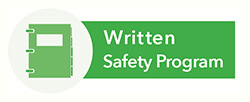
A Written Safety Program details the proper conduct and procedures to ensure a safe working environment. It should include items such as expectations and consequences (corrective action) set forth by management.
Along with providing your written Safety & Health Program, a safety orientation should be conducted prior to any employee receiving their first job assignment. This will allow for the new employees to be aware of the hazards in their work environment and the rules for minimizing those hazards. A walk around with the employee in their assigned area is an essential part of this process. Once new employees have completed safety training, they should sign an acknowledgement form indicating they have been informed of all safety procedures at the facility.
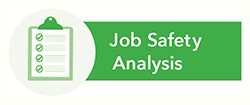
A Job Safety Analysis (JSA) carefully studies and records each step of a job, identifying existing or potential job hazards (both safety and health), and determining the proper way to perform the job to reduce or eliminate these hazards. When conducting a JSA, one should consider accident frequency, accident severity, and repetitive exposure.
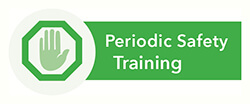
Perhaps the most important element of a successful Safety & Health Program is training. Although there are numerous laws governing employee safety training, to lessen injuries and, ultimately, protect bottom line profit, even without legal mandates management, should be energized to conduct periodic safety training.
While all training topics are important, a few that may be required by law and are vital preventive measures include:
- Hazard Communication
- Personal Protective Equipment
- Emergency Action Plan
- Bloodborne Pathogens
Additional important training areas include:
- Proper Recordkeeping
- Lock-out/Tag-out
- Slip, Trip, and Fall Protection
- Proper Lifting
- CPR/Medic First Aid/AED
- Proper Operation of Machines
- Ladder Safety
- Ergonomic Analysis
When it comes to safety training, it’s important to keep in mind that the aforementioned are only a few key areas to consider and should certainly not be perceived as all encompassing.
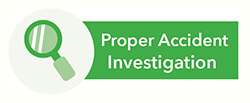
Accident investigation is a tool for prevention of further incidents. Employees should be required to report an accident immediately and the resulting investigation, ideally conducted by the immediate supervisor as soon as possible after learning of the accident, and documented in the proper forms. All accidents should then be reviewed by the Safety Committee to ascertain what action to take to prevent further occurrences.

A Return to Work Program not only lessens the amount of time an employee is away from their job, it also shows employees that they are cared about completely. This program should include detailed job descriptions of all functions of the business. When an employee goes to the doctor, this program will allow their physician to know what tasks are expected of the employee. The physician can then determine what, if any, functions of the employee’s job can be done. Management should provide various light duty options for the physician to consider in determining the employee’s work status. If your immediate reaction to the term “light duty” is that you have no light duty, it’s important to keep an open mind. Have you ever considered having an employee open the front door and greet customers as they arrive? Could they catch up on that paper filing you never get caught up on? Any task that is doctor-approved for light duty keeps the employee from staying home eating bon-bons and watching commercials of lawyers on TV. The department in charge of claims should monitor the employee’s work status with the doctor’s office and keep the supervisor informed of that status.
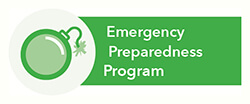
Think you’re ready for anything? Tornado? Hurricane? Flooding? Fire? A disgruntled employee or customer ransacking your place? You’ve got insurance, so it’s all covered. Are you sure? Where are you going to house your displaced clients? How are you going to pay your employees with no revenue coming in? ABC Pet down the street has no damage and they are hiring! In developing your Emergency Preparedness Program, it’s important to look at a few things you may not have considered, such as:
- Bomb Threats
- Cyber Attack
- Emergency Contact List
- Evacuation Routes
- Robberies
- Toxic Chemical Releases
- Utility Outage
- Violence in the Workplace
- Weather Emergencies
Each one of the aforementioned requires planning, training, and drilling of your Emergency Preparedness Program to ensure complete success if/when you need to implement. If you are not proactive and wait until something happens, it will be too late and possibly put your business in peril. It is recommended that you create a partnership with the local agencies that may be responding to you in case of emergency, this may reduce some stress when they assist you because you will see a familiar face. Donuts and coffee go a long way to bridge a stranger gap. Make sure you include your employees in the planning process, so they feel a sense of ownership of the program. Be sure to drill each program element so that response is a natural reaction if the time comes for action.
All of the above–mentioned elements of a Safety & Health Program represent just a few aspects of what is entailed in such an endeavor. It’s very important to remember that new employees know nothing about your operation when they first walk through that door. It cannot be stressed enough how important a successful program can be to lessen risk and directly impact your bottom line profits. Make your Safety & Health Program—orientation and training—an absolute priority because when you put safety first, you’ll avoid the worst.
Ben Day brings a wealth of experience to his safety advisory role with the International Boarding & Pet Services Association (IBPSA). A native Texan who worked in the safety profession for over thirty years, he transitioned into the Professional Employer Organization (PEO) business, where he worked as a Safety Consultant, Loss Control Manager, and Vice President of Risk Management. He holds certifications in the fields of Safety/Risk Management and Loss Control and instructs in CPR/Medic First Aid and Safety. Ben is also the owner of Ben Day Business Consultants. For more information on Ben and his role at IBPSA, visit www.ibpsa.com.


